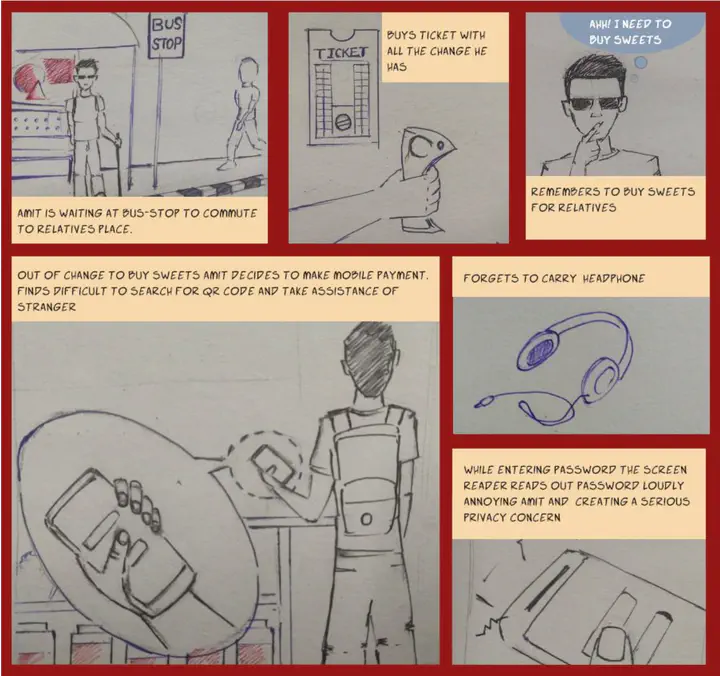Accessibility for Visually Challenged

Aim: To make mobile payment applications accessible for people with visual impairment:
For this project, I used Design Thinking Framework.
Steps involved:
Empathize: For understanding the experiences and painpoints of visually challenged individuals using mobile payment applications in outdoor and indoor settings, we conducted user research. For this, we conducted qualitative interviews on zoom calls with users living across India and also carried auto-ethnography as one of the team member was visually challenged. We then transcribed the interviews; developed themes from coding and axial coding; and made personas, scenarios, and storyboards to highlight the key findings from the user study.
Define: After analyzing the data obtained from the user research, we developed a problem statement keeping in mind the major issues faced by the user that included cluttered interface,unlabelled buttons that are not readable by the screenreader and small time window for entering credentials. We defined the problem statement as ‘How to improve the user experience of the mobile payment application for the visually challenged individuals while they are performing peer to peer transaction?’
Ideate: For ideation, we used participatory design methodology: ‘ inspiration card workshop’.
Prototype: Based on the design concepts obtained from user research and ideation phase, we developed a low fidelity prototype (Braille inscribed on cardboard simulating mobile phone screens) and a high fidelity prototype ( by deploying Adobe XD) for usability testing.
Test: We made an evaluation plan to evaluate the prototype among the users. One of us enacted the screen reader’s voice while testing the low-fidelity and high-fidelity prototype with the participants.
The methods used for evaluation plan :
- Speak aloud for low fidelity prototype with Visually challenged users, followed by interview
- Speak aloud for high fidelity prototype with Visually sighted users, followed by interview
Output:
- Proposed design ideas to make mobile payment applications accessible for people with visual impairments.
- Co-designed and evaluated low and high fidelity prototypes of mobile payment with participants (that is people with visual impairements)